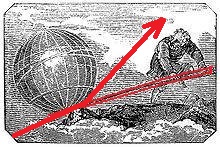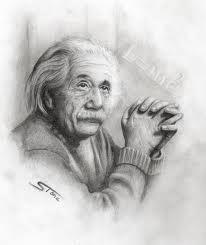Bob Beamon Long Jump Calculation
a) The competitor can initiate the jump from any point behind the foul line; however, the distance measured will always be perpendicular to the foul line to the nearest break in the sand caused by any part of the body or uniform.
b) Bob Beamon jumped the result 8.90 m. "He worked on his speed and perfecting a technique in which the jumper does not so much jump as walk in the air". the best jumpers have been sprinters. His running approach which took six seconds and jump legth resulted from an initial velocity of 9.5 m/s.
c) Thin air of Mexico City influenced by the length of the jump, 2250 metres above sea level.
D) The wind conditions were perfect for Beamon's record jump +2 meters per second. The maximum accepted wind assistance is two metres per second (m/s).
e) Gravity Mexico City 9.766 m/s2
f) Height 1.91 m. Weight 70 kg

Trajectory of the Jump
Suppose the jumper to be a living gun shot. The maximum range of the gun is achieved by directing the barrel angle of 45 degrees from the ground. The weapon is stationary on its place when shooting, but the jumper is in a horizontal motion. Elite jumpers usually leave the ground at an angle of twenty degrees or less; therefore, it is more beneficial for a jumper to focus on the speed component of the jump. It is contrary to the laws of physics say jump on the board facing about 20-degree angle, so it is assumed to be 45 degrees. Jumping in the air is very well directed twenty degrees, which has the component of the kinetic energy to horizontal direction.
The jumper not so much jumps on the board, but levers itself to 45 degrees forward angle, which shows in the air as about twenty degrees angle.

First way to determine the length of the jump
On the board the horizontal travelling speed was 9,5 m/s / SQRT (2) = 6,718 m/s
Vertical and horizontal component both 6,718 m/s.
Pascal's triangle according to visual geometry
1 dim 1 m
2 dim 1 1 m2
3 dim 1 2 1 m3
4 dim 1 3 3 1 s
6.718 m/s x 1.331 s = 8.94 m (WR 8.90 m)
Second way to determine the length of the jump
Bob Beamon jump Mexico City 1968
Time dilation table
Initial velocity 9.5 m/s / 1,03282 = 8,90 m
Pascal's triangle according to visual geometry
1 dim 1 m 1,0328
2 dim 1 1 m2 1,03282
3 dim 1 2 1 m3 1,03283
4 dim 1 3 3 1 s
Jump has the horizontal and vertical component, so it is area
Third way to determine the length of the jump
Jump has two the same rate of speed component. Horizontal 6.72 m/s and a 45-degree angle velocity component. The resultant of these components is half of 45 degrees and is 22.5 degrees. This is the angle at which the jumper appears to be flying in the air.
The number five is an important to EPC calculation. The claim is, the height of the jump is the fifth of the length+ the universal friction 1.03. (8.90 m / 5) x 1.03 = 1.83 m. By knowing the length of the jump 8.90 meters, can be calculated the nominal height of the jump.
h = 4.45 m x tan 22,5o 4,45 m = 8,90 m /2 h = height
h = 1.84 m
Of this can determine the time in seconds for the jump.
The free fall of a body
t = SQRT (h / g x 0.5)
t = SQRT (1.84 m / 0.5 x 9.766 m / s)
t = 0.614 s
Total time for the jump; 2 x 0.614 = 1.228 seconds
Fourth way to determine the length of the jump
My opinion is the physics of ball trajectories is not the correct way calculate the jump. I'll tell you a few reasons why I feel this way
a) The formula given for a trajectory is for a stand alone situation, like a gun. What about when the gun is placed on an airplane and the speed is two Machs? Jumpers horizontal travelling speed is the same as the horizontal.
b) Small-scale laboratory tests gives the wanted results according to formulas.
- The test ball diameter and weight is greatly oversized in relation to range
- The power for the test ball is not really able to determine of some spring system.
- The shape of the ball is exact. Compare this to the jumper in the air.
- Turn the bullet 90o and shoot the side first. Now formulas stopped.
c) The test ball leaves at an angle 40o to 45o, but the jumper is never in the air (ab. 20o)
d) In the absence of air-resistance the formulas work, but not in real world.
e) Some of the laudable statements related to the flight path, give the flight time for the jump. On that basis Bob Beamon in practice also made a new high jump WR. This taking into account, the bord was 4.45 m from the jumping point.
f) Long jumpers know the speed as the most important factor in performance. For this reason, it is proposed 100 and 200 m WR owning Usain Bolt to break the current record 8.95 m. Race Runner reaches the maximum speed from 50 to 70 meters in track length. The length of the jump running track is 40 meters and Is Usain Bolt for this reason too large to 40 m long track?

24.8.2018*08:51 (900 - 902)
www.karikolehmainen.com
epcalculation@gmail.com |